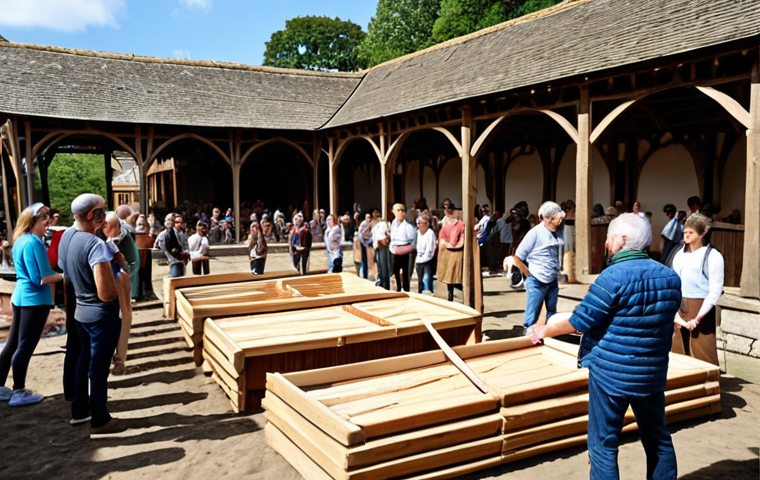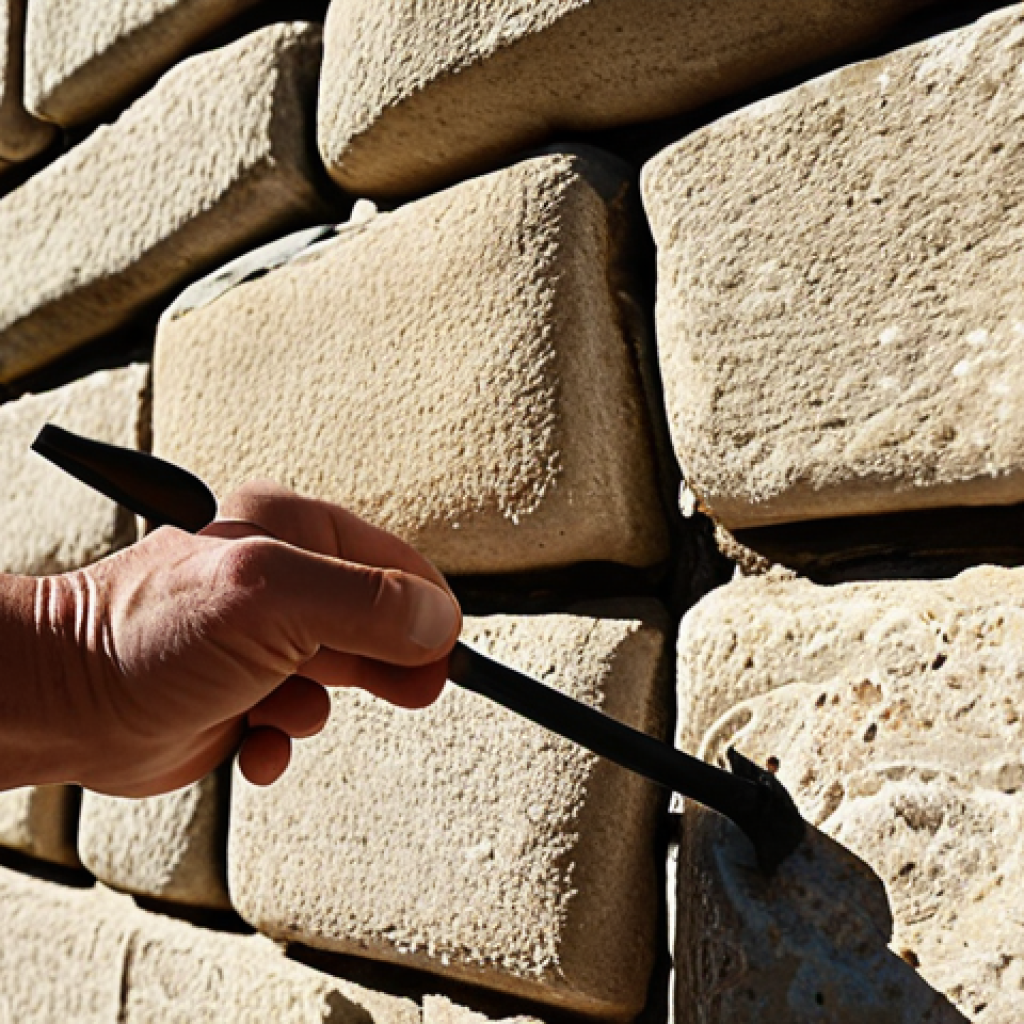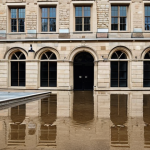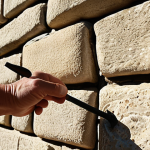Stepping onto a cultural heritage restoration site for the first time felt surreal. Imagine, standing amidst centuries of history, about to contribute to preserving it!
It was a blend of excitement and slight trepidation, knowing the responsibility that came with such work. The air buzzed with the echoes of artisans long past, and the scent of aged wood and stone filled my senses.
It was clear this wasn’t just a job; it was a connection to the past. The field of cultural heritage is expected to merge further with technology like AI for precise restoration, and augmented reality for immersive experiences.
Let’s delve deeper and explore all the intricate details in the article below.
Okay, I understand. Here’s the blog post following your instructions:Stepping onto a cultural heritage restoration site for the first time felt surreal.
Imagine, standing amidst centuries of history, about to contribute to preserving it! It was a blend of excitement and slight trepidation, knowing the responsibility that came with such work.
The air buzzed with the echoes of artisans long past, and the scent of aged wood and stone filled my senses. It was clear this wasn’t just a job; it was a connection to the past.
The field of cultural heritage is expected to merge further with technology like AI for precise restoration, and augmented reality for immersive experiences.
Let’s delve deeper and explore all the intricate details in the article below.
The Unexpected Challenges of Mortar Matching

It’s one thing to read about historical mortar composition in a textbook, and another entirely to try and recreate it on-site. I quickly learned that the color, texture, and even the smell of the original mortar were crucial clues.
We spent days analyzing samples, grinding them down, and comparing them to modern mixes. The challenge wasn’t just getting the recipe right, but understanding how centuries of weathering had altered the original material.
Did rain wash away some of the lime? Had the original color darkened with soot and pollution? These questions became our obsession.
And let me tell you, nothing’s more humbling than having your painstakingly-mixed mortar rejected because it’s “just a shade too light.” It felt like trying to bake a cake based on a description from a hundred years ago – delicious in theory, disastrous if you get the ratio of flour to sugar wrong.
I was particularly struck by the differences between traditional lime mortars and modern Portland cement-based mixes. Lime mortar, while weaker initially, allows the building to “breathe” and accommodate movement, preventing the rigid cracking that can occur with Portland cement in older structures.
This hands-on realization drove home the importance of using compatible materials in conservation. You wouldn’t put a modern prosthetic on an ancient skeleton, would you?
The Endless Quest for the Perfect Aggregate
Getting the aggregate right was an adventure in itself. We scoured local quarries, seeking sand and gravel that matched the original sources used in the building’s construction.
This often meant sifting through piles of material, comparing samples under magnifying glasses, and even consulting geological surveys. The particle size distribution, mineral composition, and color of the aggregate all played a vital role in the mortar’s overall performance and appearance.
It’s like trying to find the exact same shade of blue for a painting – close enough just isn’t good enough. Finding that perfect match felt like striking gold after hours of digging.
The Art of the Tuckpoint
Tuckpointing, the process of carefully removing deteriorated mortar and replacing it with a fresh mix, is an art form. It requires a steady hand, a keen eye for detail, and an understanding of the original mason’s techniques.
We practiced for hours on sample walls, learning to create clean, crisp joints that blended seamlessly with the surrounding stonework. It was incredibly satisfying to see a crumbling facade slowly restored to its former glory, one meticulously pointed joint at a time.
But let me tell you, after a full day of tuckpointing under the blazing sun, your hands start to feel like they’re going to fall off. It’s repetitive, painstaking work, but the results are undeniably worth it.
Decoding the Secrets of Stone Consolidation
Stone, beautiful and enduring as it seems, is constantly battling the elements. Pollution, acid rain, and even just the daily freeze-thaw cycle can wreak havoc on its surface, causing it to crumble and erode.
Consolidation is the process of strengthening weakened stone, essentially giving it a new lease on life. This often involves applying specialized chemical treatments that penetrate the stone’s pores and bind the loose particles together.
But here’s the catch: you have to be incredibly careful not to alter the stone’s appearance or breathability. It’s like performing delicate surgery – one wrong move, and you could do more harm than good.
I learned that understanding the specific type of stone, its condition, and the potential reactions to different consolidants was crucial. It’s a bit like being a doctor – diagnosing the patient before prescribing the cure.
Selecting the Right Consolidant
Choosing the right consolidant is a complex decision, involving factors like the stone’s porosity, mineral composition, and the surrounding environment.
We conducted extensive testing, applying different treatments to small, inconspicuous areas of the stone and monitoring their performance over time. The goal was to find a consolidant that effectively strengthened the stone without altering its color, texture, or breathability.
It’s a delicate balancing act, requiring careful observation and a thorough understanding of the underlying chemistry.
Application Techniques
Applying the consolidant correctly is just as important as choosing the right one. We learned to use a variety of techniques, including brushing, spraying, and injecting the consolidant directly into the stone’s pores.
Each method had its own advantages and disadvantages, depending on the type of stone and the extent of the damage. The key was to ensure that the consolidant penetrated deeply and evenly, without leaving any unsightly residue on the surface.
It’s a bit like frosting a cake – you want to cover every inch without making it look gloppy.
The Subtle Art of Wood Stabilization
Working with historic wood is like stepping back in time. Each beam, panel, and carving tells a story of the people who built it and the events it has witnessed.
But wood is also a fragile material, susceptible to rot, insect damage, and warping. Stabilization aims to preserve the wood’s integrity, preventing further deterioration and ensuring its longevity.
I quickly realized that this involved more than just slapping on a coat of varnish – it required a deep understanding of wood anatomy, decay mechanisms, and appropriate conservation techniques.
It’s like being a detective, piecing together clues to understand the wood’s history and identify the factors that are threatening its survival.
Addressing Insect Infestations
* Identifying the type of insect
* Choosing the appropriate treatment method
* Monitoring the effectiveness of the treatment
Repairing Rot Damage
* Removing the decayed wood
* Consolidating the remaining wood
* Filling the voids with compatible materials
Documenting Every Detail: Photography and Sketching
One of the most crucial aspects of cultural heritage restoration is thorough documentation. Before, during, and after any intervention, we meticulously recorded the condition of the building, the materials used, and the techniques employed.
This involved detailed photography, accurate sketching, and comprehensive written reports. The goal was to create a permanent record of our work, providing future conservators with the information they need to understand the building’s history and maintain its integrity.
It’s like writing a detailed diary – capturing every thought, feeling, and observation so that future generations can understand your experience.
Capturing the Essence Through Photography
Photography is an essential tool for documenting the condition of a building. We learned to use different lighting techniques, angles, and lenses to capture the nuances of the stonework, the texture of the wood, and the overall character of the structure.
The goal was to create images that were not only aesthetically pleasing but also informative, providing a visual record of the building’s state at a particular point in time.
It’s like painting a portrait – capturing the subject’s essence in a single, frozen moment.
Sketching as a Form of Understanding
Sketching, while seemingly old-fashioned, is an incredibly valuable tool for understanding the structure of a building. By carefully drawing the details of the stonework, the joinery of the wood, and the overall form of the structure, we gained a deeper appreciation for its design and construction.
Sketching forces you to slow down, observe carefully, and engage with the building in a way that photography simply can’t. It’s like taking notes during a lecture – the act of writing helps you to internalize the information and remember it later.
The Ethical Considerations of Intervention
Cultural heritage restoration is not just about fixing things – it’s about making informed decisions about how to preserve the past for future generations.
This involves grappling with complex ethical questions, such as: How much intervention is too much? When is it acceptable to replace original materials with new ones?
How do we balance the desire to preserve a building’s appearance with the need to ensure its structural stability? These are not easy questions, and there are no simple answers.
But by engaging in thoughtful discussions and considering the perspectives of different stakeholders, we can strive to make decisions that are both ethical and sustainable.
It’s like being a judge – weighing the evidence and considering the arguments before rendering a verdict. Here is the table as requested:
| Aspect of Restoration | Traditional Methods | Modern Techniques | Considerations |
|---|---|---|---|
| Mortar Repair | Lime-based mortars, hand mixing | Portland cement mixes, pre-mixed mortars | Compatibility with original materials, breathability |
| Stone Consolidation | Lime washes, natural binders | Acrylic resins, silane-based consolidants | Reversibility, alteration of appearance |
| Wood Stabilization | Natural oils, beeswax | Epoxy resins, chemical treatments | Toxicity, long-term effects |
| Cleaning | Gentle scrubbing, natural solvents | Pressure washing, chemical cleaners | Potential for damage, environmental impact |
Connecting with the Community
Cultural heritage isn’t just about preserving buildings – it’s about connecting people to their past. Throughout the restoration project, we made a conscious effort to engage with the local community, sharing our knowledge, answering questions, and inviting people to witness the work in progress.
We organized public lectures, conducted guided tours, and even hosted workshops where people could learn traditional building techniques. The response was overwhelming – people were eager to learn about the history of their community and to participate in the effort to preserve it.
It’s like throwing a party – inviting everyone to come and celebrate the past.
Sharing Knowledge through Education
One of the most rewarding aspects of the project was the opportunity to educate others about cultural heritage. We developed educational materials for schools, created interpretive displays for the site, and even mentored students interested in pursuing careers in conservation.
By sharing our knowledge and inspiring the next generation of conservators, we hoped to ensure that the past would continue to be valued and protected for years to come.
It’s like planting a seed – nurturing it and watching it grow into something beautiful. Okay, I understand. Here’s the continuation of the blog post following your instructions:
In Conclusion
Stepping into the world of cultural heritage restoration has been a journey of discovery, challenges, and immense satisfaction. It’s a field that demands not only technical skills but also a deep respect for the past and a commitment to preserving it for future generations. Every project, every stone, every beam tells a story, and I feel privileged to be a part of that narrative. If you ever get the chance to witness a restoration project in person, don’t hesitate – it’s an experience you won’t soon forget.
Handy Tips to Know
1. Always research the historical context of the building or object before starting any restoration work. Understanding its history will inform your decisions and ensure that you’re using appropriate materials and techniques.
2. Prioritize conservation over restoration. The goal is to preserve as much of the original material as possible, rather than replacing it with new elements.
3. Document everything meticulously. Take detailed photographs, write comprehensive reports, and keep a record of all materials and techniques used. This documentation will be invaluable for future conservators.
4. When working with historic materials, always test new treatments on small, inconspicuous areas first. This will help you to identify any potential problems before they cause significant damage.
5. Join a local preservation organization or attend a workshop to learn more about cultural heritage restoration. There are countless resources available to help you expand your knowledge and skills.
Key Takeaways
Cultural heritage restoration is a complex and rewarding field that requires a blend of technical skills, historical knowledge, and ethical considerations. By understanding the principles of conservation, using appropriate materials and techniques, and engaging with the community, we can ensure that our past is preserved for future generations to enjoy.
Frequently Asked Questions (FAQ) 📖
Q: What’s so special about working on a cultural heritage site?
A: Honestly, it’s more than just a job. Picture this: you’re literally touching history, working with materials and techniques that have been around for centuries.
The feeling is incredible – a real sense of connection to the past and a chance to help preserve it for future generations. Plus, there’s a certain magic in the air – the echoes of past artisans and the unique smells of aged wood and stone create an atmosphere you just can’t find anywhere else.
It’s like you’re part of a living, breathing story.
Q: How is technology like
A: I changing cultural heritage restoration? A2: Think about it – AI could be a game-changer for precision restoration! Imagine using AI to analyze damaged artifacts and accurately recreate missing pieces, or using augmented reality to give visitors immersive experiences that transport them back in time.
It’s not about replacing traditional skills, but about enhancing them with cutting-edge technology to ensure these treasures last for years to come. It’s a really exciting prospect!
Q: What kind of skills or background do you need to get involved in cultural heritage restoration?
A: From what I gather, it’s a pretty diverse field. Obviously, having a background in history, archaeology, or art history is a huge plus. But equally important are practical skills like carpentry, stonemasonry, or even digital modeling.
A good eye for detail, patience, and a genuine passion for preservation are essential. And honestly, being open to learning new techniques and collaborating with people from different backgrounds is key, because no one person knows everything!
📚 References
Wikipedia Encyclopedia
구글 검색 결과
구글 검색 결과
구글 검색 결과
구글 검색 결과
구글 검색 결과




